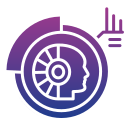AI in Market Segmentation: Techniques and Tools
Artificial Intelligence is radically reshaping the way businesses approach market segmentation, enabling deeper insights, higher efficiency, and more personalized customer engagement strategies. By leveraging the power of AI-driven technologies, organizations can not only identify new and nuanced customer segments but also adapt rapidly to dynamic market trends. This transformation is altering the landscape of marketing, driving smarter decision-making, optimizing resource allocation, and enhancing customer satisfaction. In this comprehensive overview, we will delve into the core AI techniques and tools that are revolutionizing market segmentation, examining their benefits, challenges, implementation processes, and their impact on future marketing practices.

Understanding AI-Driven Market Segmentation
What Sets AI Segmentation Apart
Key Data Sources in AI Segmentation
The Role of Automation
Tools Powering AI Market Segmentation
Machine Learning Platforms
Customer Data Platforms (CDPs)
Automated Analytics Tools
From Insights to Action: Applying Segmentation Results
Benefits of AI Market Segmentation
Challenges in Implementing AI for Market Segmentation


